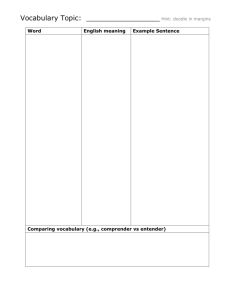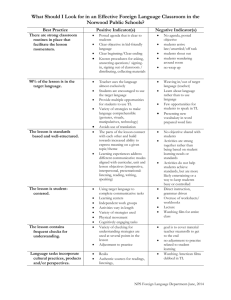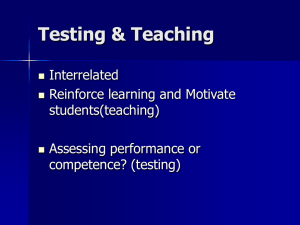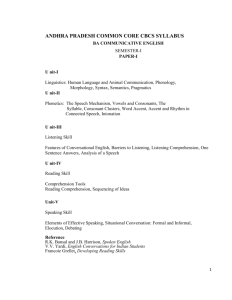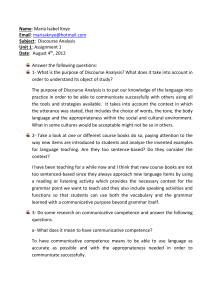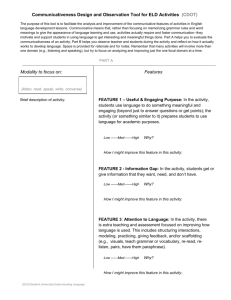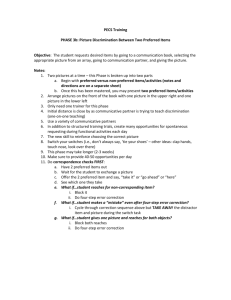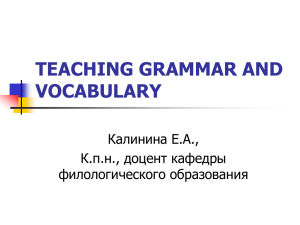Tradition and Transition in Second Language
advertisement
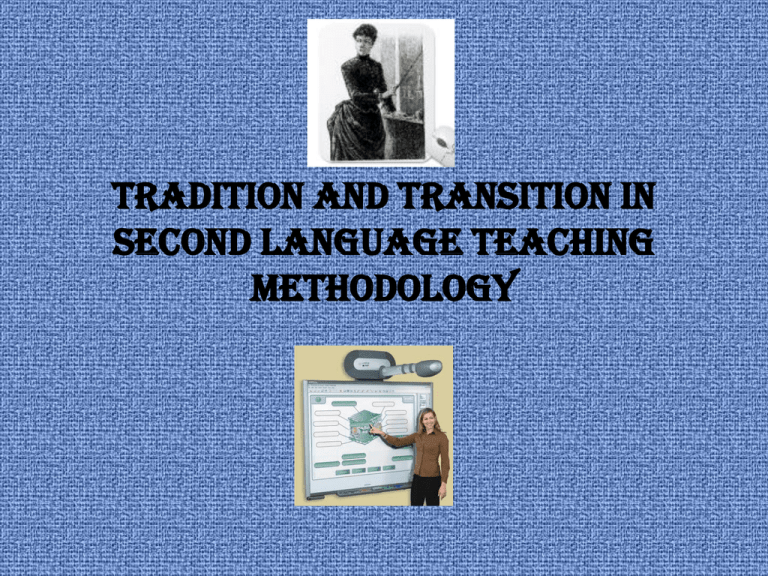
Tradition and Transition in Second Language Teaching Methodology Why learn a second language? 50 years of transformations Silent Way Direct Translation Audiolingualism Direct Method Total Physical Response Suggestopedia Cognitive Code Counseling Learning Current Trend - Preparation for the Global Community - Preparation for High Level of Proficiency Research Communication Instruction Correction As a result: a new methodology Traditional Methods Communicative Methods What are the common goals of educators regardless of their method? Language Learning Success! Communicative Methodology Students learn English through communication techniques Grammar is taught in indirect ways Grammar correction reserved for message meaning Communicative Classroom No dictation No translation No recitation No drills No dialog Student centered activities New Methodology Communicative Methodology + Traditional Methodology • • • • • Meaningful and understandable Learning structure and sounds Relating structure to text Applying structure to reading and writing Verb tense, action, space, number, genter, articles, etc. Communication reinforces these rules Reading and writing needs to take place and corrected when needed Four components for successful language learning • Imput(material) is meaningful and comprehensible • Attention to the form and meaning of that input • They must be able to speak • They must receive feedback for improvement How do we teach this? • Integration of traditional methods into the communicative class • Focus on grammar which is very close to that of the native language that the students do not notice it in communicative imput and do not rely on it to understand it. Integration of traditional methodologies into a communicative classroom. Grammar Activities • • • • Grammar decision making Information exchange Dictogloss Dictocomp tasks like verb drills and exercises, dictation and recitation Review Research shows: Instruction Correction + Communication Success! Activities 1. Focus on 2nd language form in relation to message meaning. 2. Teach verb form in context. 3. Incorporate listening, speaking, reading, and writing into material. 4. Simple feedback focusing on one error at a time. 5. Grammar activities are effective when students are ready to learn. References Pica, T. (2000). Tradition and transition in English language teaching methodology. System. 28:118
